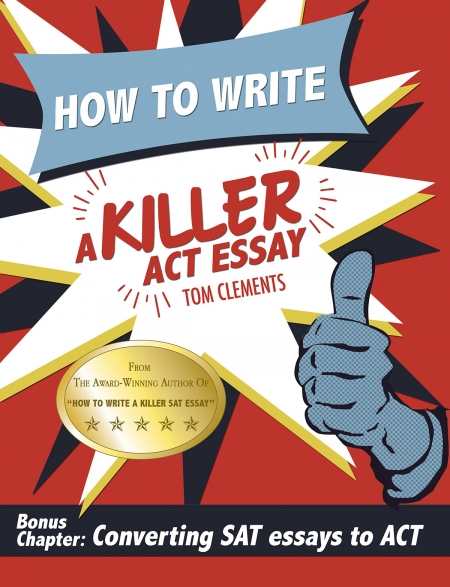How to Write a Killer ACT Essay
Clements has done students a great favor by distilling the necessary knowledge into an easy-to-read, easy-to-use workbook.
It has become a rite of passage for high school students: study, practice, and take the SAT and ACT, tests that are a crucial part of the college application process. While the aptitude-testing SAT was once the gold standard for college admissions, more and more students take the achievement-oriented ACT every year, with recent registrations topping the one-and-a-half million mark. The thing on nearly every high school junior’s mind is how to ace this test, and the essay portion is often the biggest challenge. Tom Clements’s practical and friendly workbook, How to Write a Killer ACT Essay, takes students inside the ACT’s essay test and teaches them to create essays that will satisfy the ACT’s scoring criteria and earn them the coveted double-digit score.
Clements, a former English teacher and tutor, addresses teens directly with his informal, often humorous style, which starts with his title and the punchy Pop Art cover. He doesn’t spend a lot of time debating the merits of testing but cuts right to the chase: how do you give the testers what they want? He calls it “parsing the prompt,” and that is just what he teaches students to do. Clements demystifies the ACT essay prompt by showing students the highly patterned types of questions they are likely to encounter and then explaining how the answers are graded. Much of the scoring rubric is fairly standard—test graders look for examples and quotations that back up your arguments, for instance—but not everyone realizes that writing under 400 words can set back your score, no matter how elegantly you defended your position. Clements keys students in to the test’s idiosyncrasies, which can make all the difference in their ultimate score.
Examples of actual ACT essays illustrate Clements’s points and give students useful models to work with. Most are exemplary instances, and, while instructive, these might be more impressive if balanced with examples of poor-scoring essays. Some of the material is repetitive—Clements repeatedly covers the “T-chart” that he recommends for mapping out the pros and cons of your argument, for instance—but it does give students the chance to practice the tools. Clements provides practice space for three essays, and while it’s convenient to have these mostly blank pages included in the book, they take up a relatively large portion of this slender volume. It’s only half the length of his earlier workbook on the SAT essay, and one wonders what might be missing from the ACT book.
If, on the other hand, the ACT essay is really as easy to understand and conquer as Clements’s suggests, he has done students a great favor by distilling the necessary knowledge into an easy-to-read, easy-to-use workbook. How to Write a Killer ACT Essay will take much of the mystery and some of the stress out of this apparently inevitable high school ritual.
Reviewed by
Sheila M. Trask
Disclosure: This article is not an endorsement, but a review. The publisher of this book provided free copies of the book and paid a small fee to have their book reviewed by a professional reviewer. Foreword Reviews and Clarion Reviews make no guarantee that the publisher will receive a positive review. Foreword Magazine, Inc. is disclosing this in accordance with the Federal Trade Commission’s 16 CFR, Part 255.

